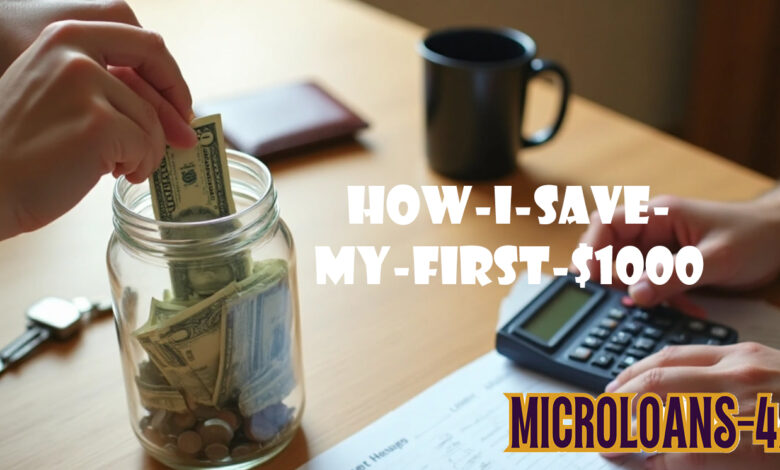
Hello, friends. Welcome to our blog. My name is Max, and if this is your first time visiting our blog, then bookmark our site because we will constantly share articles that benefit you and your business Always make sure to visit our blog from time to time for important articles such as what we are about to share now.
Hello, when I first set the goal of saving $1,000, I was earning just enough to cover rent, food, and a few bills. It felt like a distant dream. But with consistent effort, small mindset shifts, and a few smart strategies, I hit that goal faster than I expected, without working overtime or giving up everything I enjoyed.
If you’re living on a tight budget, this post is for you. Here’s exactly how I did it.
Step 1: I Got Real With My Budget
So the first thing I had to do was face the numbers. I tracked every dollar coming in and going out for a full month. I used a simple spreadsheet and my bank’s mobile app to categorize expenses like rent, groceries, dining out, subscriptions, and gas.
This exercise was eye-opening. I realized I was spending almost $150/month on small things like coffee runs, online shopping, and unused subscriptions, money I didn’t even miss until I saw the total.
Lesson Learn: To make positive changes in your finances, you need to start by keeping an eye on your spending. Understanding where your money is going is the crucial first step toward saving more effectively.
Step 2: I Cut Back Without Feeling Miserable
So once I saw the leaks in my spending, I didn’t go full minimalist. Instead, I made a few smart cuts that didn’t hurt my lifestyle.
- Switched to Store Brands
I replaced name-brand groceries with store-brand alternatives and saved around 30–40% on average. I couldn’t even tell the difference most of the time.
- Canceled Unused Subscriptions
I found three services I hadn’t used in months and canceled them. That alone freed up $45/month.
- Followed the 48-Hour Rule
So, Whenever I wanted to buy something non-essential, I gave myself 48 hours to think it over. Nine times out of ten, the urge passed.
- Planned My Meals
Meal prepping helped me avoid costly takeout. It saved me time and around $60/week.
So These simple changes added up to around $250 in monthly savings, money I redirected straight into my savings account.
YHow Much Do I Need to Save to Retire?OUR TEXT
Step 3: I Treated Savings Like a Bill
I used to think of saving as “whatever’s left at the end of the month.” The problem? There was never anything left.
So I flipped the script. I began treating saving like a non-negotiable bill—something I had to “pay” every payday. I set up automatic transfers of $50 every two weeks into a separate high-yield savings account. Out of sight, out of mind—I didn’t see it, and I didn’t touch it.
And you know what? I didn’t miss it either.
Step 4: I Made a Little Extra on the Side
With a full-time job and limited free time, I didn’t want to take on a second job. But I did find small ways to earn extra cash:
-
Sold unused items around the house, old clothes, gadgets, and books. I made over $300 on Facebook Marketplace.
-
Took online surveys and focus groups, not glamorous, but easy. Some paid $25 to $75 per hour.
-
Freelanced a few hours a week doing simple writing gigs.
In just a few months, those side efforts added another $400+ to my savings total.
Step 5: I Celebrated Small Wins
Every time I hit another $100 milestone, I paused to celebrate not by spending, but by acknowledging the progress. That motivation kept me going.
YOUR TEXTMake Money in Retirement: Enjoyable and Flexible Business Ideas
Final Words
So saving your first $1,000 on a small income isn’t about making giant sacrifices or earning six figures. It’s about being intentional. It’s about knowing your numbers, making smarter choices, and building momentum one decision at a time.
If you’re just getting started, here’s what I recommend:
-
Track your spending for 30 days
-
Cut the easy stuff first, unused subscriptions, and impulse purchases
-
Automate your savings (even if it’s just $10/week)
-
Look for small ways to earn more selling, side hustles, etc.
I did it, and so can you.
Know that Your first $1,000 is more than just a number; So it’s proof that you’re capable of taking control of your money and your future. So always make sure you return here for more helpful article such as this thanks.



